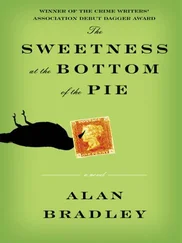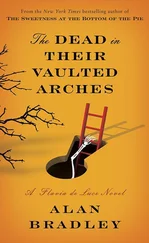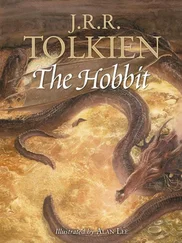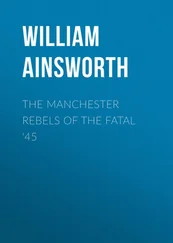314 “We will resume the sending of virus samples”:“Indonesia Confirms Readiness to Send Bird Flu Virus to WHO,” Xinhua, April 4, 2007.
314 “I believe the developing countries are right”:Margaret Chan, Opening remarks at the Meeting on Options for Increasing the Access of Developing Countries to H5N1 and other Potential Pandemic Vaccines, Geneva, April 25, 2007.
315 “I will fail you”:Laura MacInnis, “WHO’s Chan Pledges Fair Access to Bird Flu Vaccines,” Reuters, May 17, 2007.
315 suggested the UN Security Council:Laurie Garrett and David P. Fidler, “Sharing H5N1 Viruses to Stop a Global Influenza Pandemic,” PLoS Medicine 4, no. 11 (Nov. 2007): e330, 1712-14.
315 “I was exhausted”:Siti Fadilah Supari, It’s Time for the World to Change: In the Spirit of Dignity, Equity, and Transparency, Divine Hand Behind Avian Influenza (Jakarta: Sulaksana Watinsa Indonesia, 2008), 129.
315 their private encounter:Accounts of the meeting were provided by several Indonesian and WHO officials. Supari’s comments are drawn from Supari, It’s Time for the World to Change, 129-31.
317 weapons of mass destruction:Supari, It’s Time for the World to Change, 19.
317 “the nuttiest idea I ever heard”:“Remarks by Defense Secretary Robert Gates to the Indonesian Council on World Affairs, Jakarta, Indonesia,” Federal News Service, Feb. 25, 2008.
317 a rapturous reception:See, for example, “Alarm as Indonesia Thumbs Nose at West over Bird Flu,” Agence France Presse, Sept. 7, 2008.
317 “of no use to us”:“RI Seeking Equality in Cooperation with NAMRU-2: Minister,” Antara news agency, June 26, 2008.
317 One lawmaker called for a probe:“News Focus: Call for Closure of NAMRU-2 in Indonesia Increasing,” Antara news agency, June 27, 2008.
Chapter Twelve: Peril on the Floodplain
321 a quarter of all the illegally trafficked chickens:“Illegal Chickens in Northern Area Test Positive for Bird Flu,” Viet Nam News, Mar. 22, 2008.
321 uncovered lab evidence:H. Chen et al., “Establishment of Multiple Sublineages of H5N1 Influenza Virus in Asia: Implications for Pandemic Control,” PNAS 103, no. 8 (Feb. 21, 2006): 2845-50.
321 on “multiple occasions”:Tien Dung Nguyen et al., “Multiple Sublineages of Influenza A Virus (H5N1), Vietnam, 2005-2007,” Emerging Infectious Diseases 14, no. 4 (Apr. 2008): 632-36.
322 The strain made its debut:For more discussion, see Carl Suetens et al., “Eagles Testing Positive for H5N1 Imported Illegally into Europe from Thailand,” Eurosurveillance 8, no. 44 (Oct. 28, 2004); and Debora MacKenzie, “Europe Has Close Call with Deadly Bird Flu,” New Scientist, Oct. 26, 2004.
322 “very, very lucky”:MacKenzie, “Europe Has Close Call.”
322 exploded out of East Asia:See overviews in “Epidemiology of WHO-Confirmed Human Cases of Avian Influenza A(H5N1) Infection,” Weekly Epidemiological Record 81, No. 26 (June 30, 2006): 249-57; and “Update: WHO-Confirmed Human Cases of Avian Influenza A(H5N1) Infection,” Weekly Epidemiological Record 82, No. 6 (Feb. 9, 2007): 41-47.
322 each time researchers checked:See, for example, B. Pattnaik et al., “Phylogenetic Analysis Revealed Genetic Similarity of the H5N1 Avian Influenza Viruses Isolated from HPAI Outbreaks in Chickens in Maharashtra, India, with Those Isolated from Swan in Italy and Iran in 2006,” Current Science 91, no. 1 (July 10, 2006): 77-81; M. F. Ducatez et al., “Multiple Introductions of H5N1 in Nigeria,” Nature 442 (July 6, 2006): 37; and Siegfried Weber et al., “Molecular Analysis of Highly Pathogenic Avian Influenza Virus of Subtype H5N1 Isolated from Wild Birds and Mammals in Northern Germany,” Journal of General Virology 88 (2007): 554-58.
323 fallen sick in Turkey:For details, see Ahmet Faik Oner et al., “Avian Influenza A (H5N1) Infection in Eastern Turkey in 2006,” NEJM 355, no. 21 (Nov. 23, 2006): 2179-85.
323 the famed bird market:Elaine Sciolino, “In the Land of Coq au Vin, Soul Searching over Bird Flu,” New York Times, Feb. 24, 2006.
323 the ravens at the Tower of London:Mary Jordan, “Bird Flu Fears Coop Up London’s Famous Ravens,” Washington Post, Feb. 22, 2006.
323 dumped in the Nile River:Daniel Williams, “Spooked by Bird Flu, Egyptians Horde [ sic ] Water,” Washington Post, Feb. 26, 2006.
323 “While it was originally suspected”:“Nigeria; Bird Flu: FG Links Source to Illegal Importation of Chicks,” Africa News, Mar. 3, 2006.
323 introduced to the country three separate times:M. F. Ducatez et al., “Multiple Introductions of H5N1 in Nigeria,” Nature 442 (July 6, 2006): 37.
323 most likely along internal trade routes:“FAO Urges Nigeria to Increase Bird Flu Control Measures,” FAO news release, Feb. 20, 2007. In most of the affected Nigerian states, the flu strains continued to evolve into new forms. See Isabella Monne et al., “Reassortant Avian Influenza Virus (H5N1) in Poultry, Nigeria, 2007,” Emerging Infectious Diseases 14, No. 4 (Apr. 2008): 637-40.
324 Are wild birds the culprit:The evidence implicating wild birds has been mounting. The following is a sampling: H. Chen et al., “H5N1 Virus Outbreak in Migratory Waterfowl,” Nature 436 (July 14, 2005): 191-92; Dennis Normile, “Are Wild Birds to Blame?” Science 310, no. 5747 (Oct. 21, 2005): 426-28; Robert G. Webster et al., “H5N1 Outbreaks and Enzootic Influenza,” Emerging Infectious Diseases 12, no. 1 (Jan. 2006): 3-8; H. Chen et al., “Establishment of Multiple Sublineages of H5N1 Influenza Virus in Asia: Implications for Pandemic Control,” PNAS 103, no. 8 (Feb. 21, 2006): 2845-50; Dennis Normile, “Evidence Points to Migratory Birds in H5N1 Spread,” Science 311, no. 5765 (Mar. 3, 2006): 1225; Bjorn Olsen et al., “Global Patterns of Influenza A Virus in Wild Birds,” Science 312, no. 5772 (Apr. 21, 2006): 384-88; Marius Gilbert et al., “Anatidae Migration in the Western Palearctic and the Spread of Highly Pathogenic Avian Influenza Virus H5N1 Virus,” Emerging Infectious Diseases 12, no. 11 (Nov. 2006): 1650-56; Raja Sengupta et al., “Ecoregional Dominance in Spatial Distribution of Avian Influenza (H5N1) Outbreaks,” Emerging Infectious Diseases 13, no. 8 (Aug. 2007): 1269-70; Juthatip Kwawcharoen et al., “Wild Ducks as Long-Distance Vectors of Highly Pathogenic Avian Influenza Virus (H5N1),” Emerging Infectious Diseases 14, no. 4 (Apr. 2008): 600-606; Donata Kalthoff et al., “Pathogenicity of Highly Pathogenic Avian Influenza Virus (H5N1) in Adult Mute Swans,” Emerging Infectious Diseases 14, no. 8 (Aug. 2008): 1267-70; and A. Townsend Peterson et al., “Influenza A Virus Infections in Land Birds, People’s Republic of China,” Emerging Infectious Diseases 14, no. 10 (Oct. 2008): 1644-46.
324 Or is it trade in poultry:There is also a body of evidence indicating that the role of wild birds in spreading the virus is less significant than that of commerce. See, for example, D. S. Melville and Kennedy F. Shortridge, “Influenza: Time to Come to Grips with the Avian Dimension,” Lancet Infectious Diseases 4, no. 5 (May 2004): 261-62; Chris J. Feare, “The Role of Wild Birds in the Spread of HPAI H5N1,” Avian Diseases 51, no. S1 (2007): 440-47; M. Gauthier-Clerc, C. Lebarbenchon, and F. Thomas, “Recent Expansion of Highly Pathogenic Avian Influenza H5N1: A Critical Review,” Ibis 149 (2007): 202-14; Thomas P. Weber and Nikolaos I. Stilianakis, “Ecological Immunology of Avian Influenza (H5N1) in Migratory Birds,” Emerging Infectious Diseases 13, no. 8 (Aug. 2007): 1139-43; and “Don’t Blame Wild Birds for H5N1 Spread—Expert,” Reuters, Jan. 23, 2008.
Читать дальше











